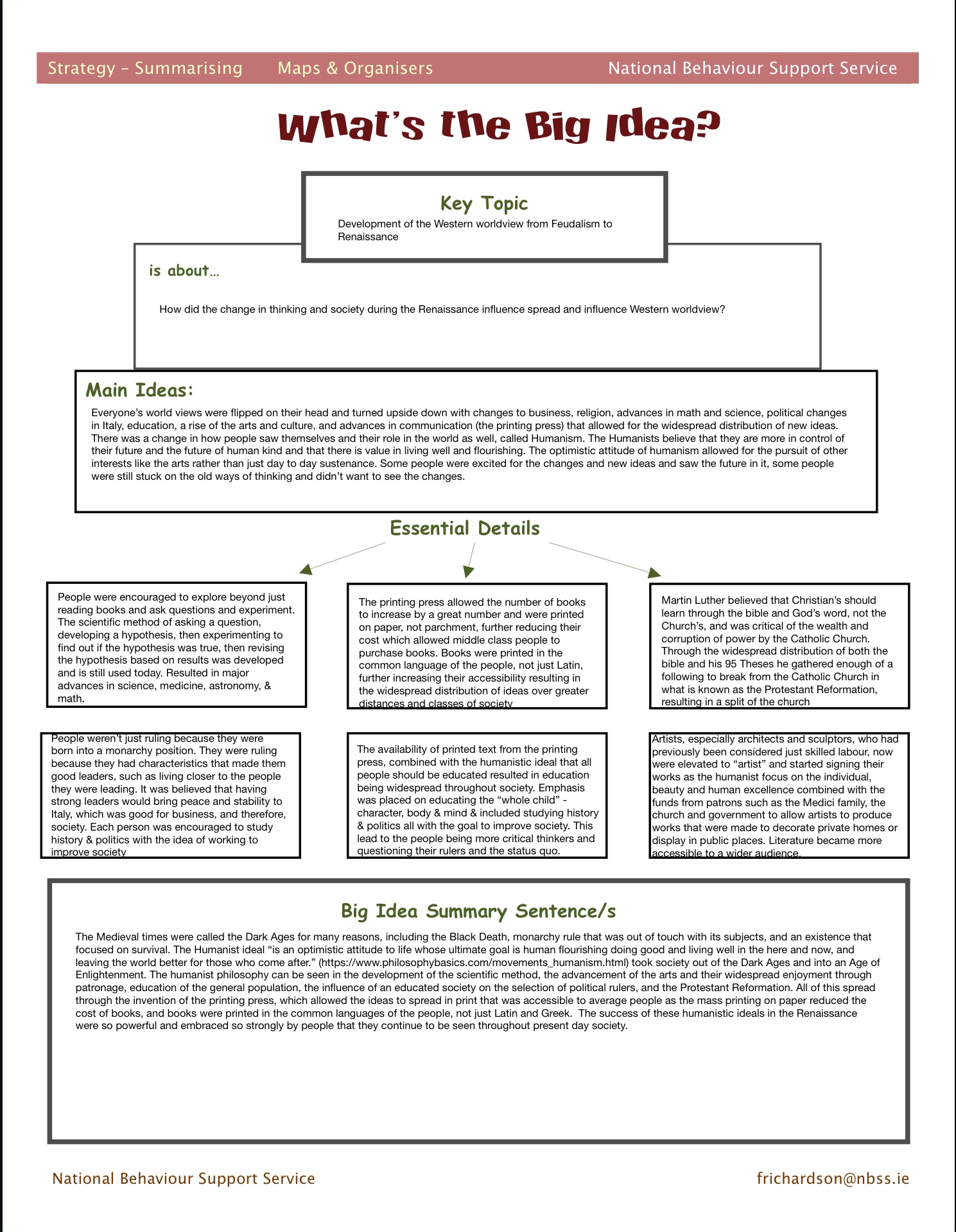This Changes Everything
The Renaissance represented a time in history of one of the biggest changes in worldview ever. From how people viewed the world and their place in it, to advances in science, medicine, arts and literature. The invention of the printing press and widespread education led to mass distribution of printed knowledge. People in the Renaissance were the most educated population to date. Almost nothing was the same in people’s lives when the Renaissance began, no matter their socio-economic status or class in society.
For our project this term we had to understand the big idea of the tension between those people who embraced the changes happening during this time, and those who wanted to preserve tradition. One of the ways we explored this was we were assigned three influential people of the time. We had to research their contributions, and then do a comparison chart about them. We then had to use the comparison chart and our other research to create a triptych. A triptych is a three panel visual work, with the main image in the middle. Below is my comparison chart for my assigned people. One is an artist, one is a thinker/scientist, and one is a writer. Two of them, Zacharias Janssen and Laura Cereta, are relatively unknown today, yet they made impressive contributions to present day. Zacharias Janssen is presumed to be the inventor of the first compound microscope and the optical telescope, although the records that prove this were destroyed in the Second World War when the Netherlands was bombed. It is hard to imagine a modern lab without a microscope, or the space program without a telescope. Laura Cereta represents the changing role of women in the Renaissance as they became more educated and were considered on equal footing with men. She is thought to be the first feminist writer and copies of her manuscript were widely published and still exist today.
Rafael is an accomplished artist whose name is still recognized today, and I’m not talking about the Teenaged Ninja Turtle. He is considered to be one of the great trinity of artists that represent the period. You will recognize the other two: Michelangelo and Leonardo Da Vinci. They had a more realistic way of painting people, and the backgrounds and settings were more detailed and brighter than in the Medieval Period. It’s not surprising then when comparing the living conditions, art, and lack of education that characterize the Medieval Period, that the Renaissance is called the Age of Enlightenment. Most of these masters’ works are still on display today in the Vatican, the Sistine Chapel, and in many prestigious museums around the world. The painting below by Rafael, St. Michael Vanquishing Satan (1518), is on display in the Louvre in Paris.

Below is my triptych, which is explaining in images how things from the older western world still translate into modern day. The whole image as a piece represents how the Renaissance world views are still around today. In the background is a city, which represents modern day. There is a group of people with one person walking away. The person walking away is thinking differently and thinking outside the box. This represents the innovative thinking from the Renaissance that still exists today. Then there is the printing press with a computer on top, showing how far we have come in the mass distribution of information.
There were so many influential world changing ideas and works produced during the Renaissance, that I’ve included my summary sheet from class to show the extent of the innovation. In fact, one of the things I found the most intriguing was how many of the changes to education, medicine, religion, thinking, art, literature and science are still in widespread use today. That scientific method you use in Chemistry class that sounds so modern, is actually over 500 years old.

